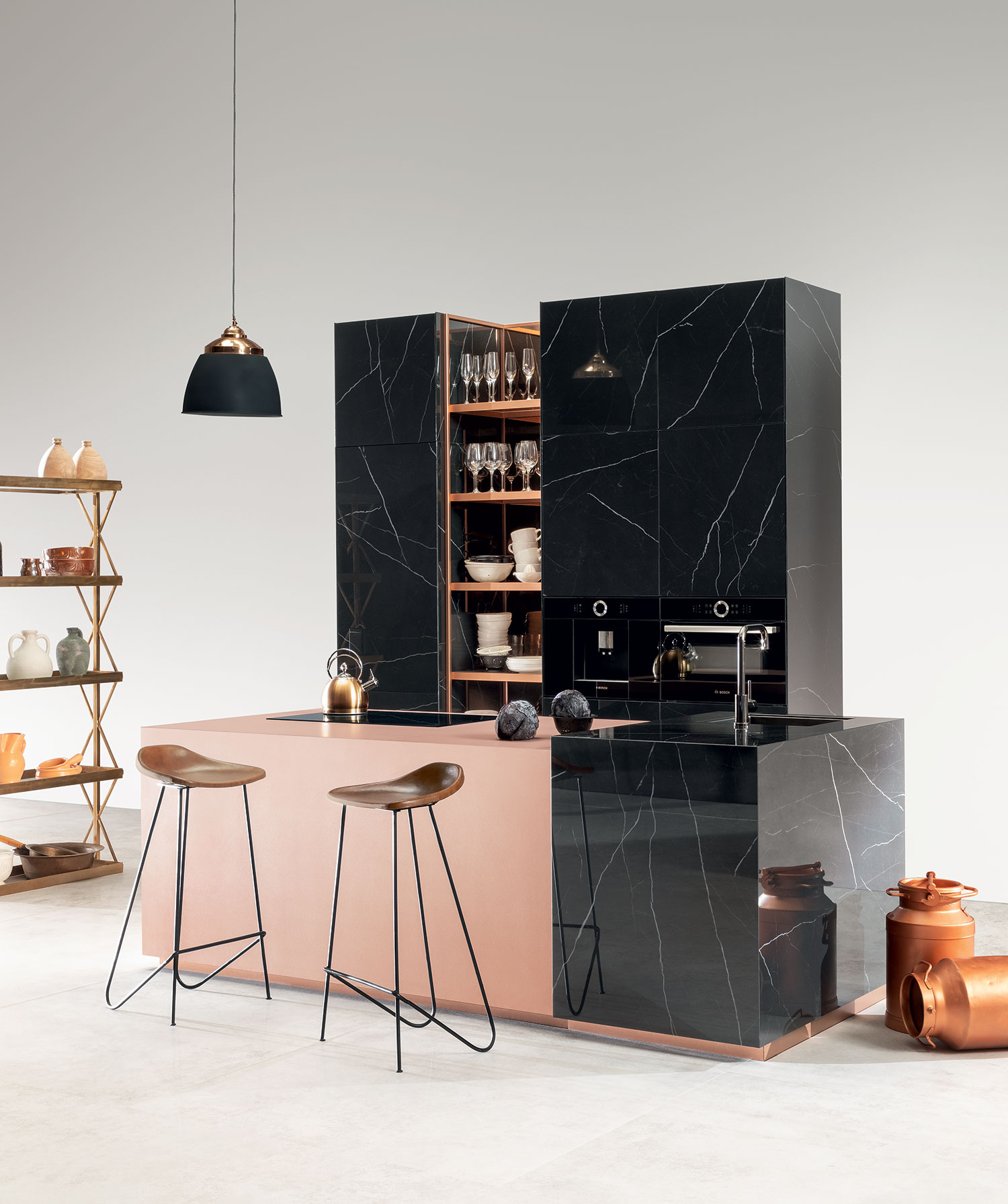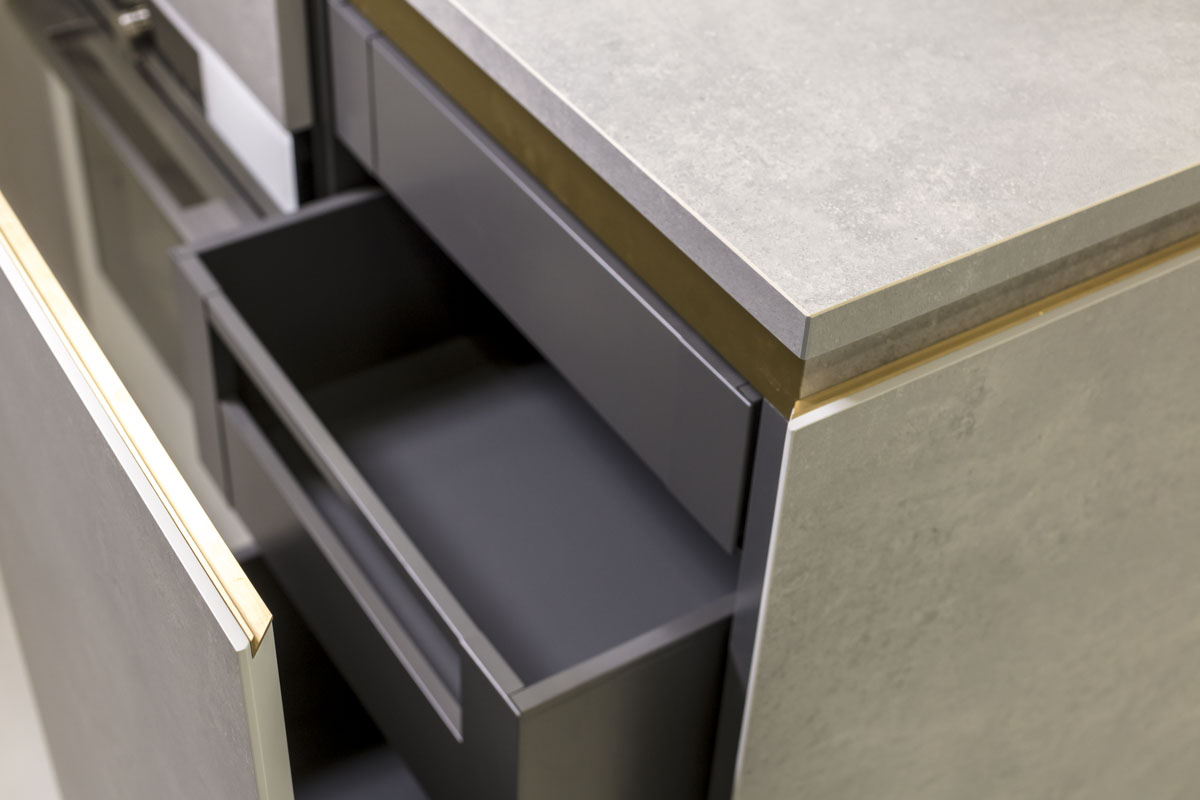It might seem that ceramic tiles in interiors are mainly placed on the floors and walls of kitchens, bathrooms and hallways. This is because it is difficult to find competing products with even similar parameters and design. Because of their durability and ease of cleaning, customers increasingly want to use them more widely, as far as technology allows.
In recent years we have seen the use of ceramics on furniture. Natural stone, is beautiful, but heavy and difficult to install. Therefore, architects and designers rely on large-format stoneware, sometimes called ceramic sintering. Ceramic tiles allow for a large surface area without joints or joints while maintaining the pattern. Thanks to these qualities, tiles have begun to be used more readily on other surfaces, such as fireplaces and furniture. The advent of large-format tiles of lesser thickness has given architects ample opportunity to use them on furniture.
Large-format porcelain stoneware has become a replacement for natural stone cladding. Monolith tiles have made it possible to use ceramics in places previously reserved for the stone industry. Natural stone comes in an almost unlimited range of sizes and thicknesses. It makes it possible to make self-supporting countertops without support or substructure. Stone bonding makes it possible to make monolithic, angled bonded and honed countertops. This is its incredible advantage, however, with the use of appropriate technology, similar realizations can also be made of stoneware tiles on a substructure.
One of the characteristics of stone is its diversity not only in terms of visual appearance, but also in terms of use. Some species are characterized by high hardness, others can be brittle, and still others are highly absorbent and require impregnation. Ceramic tiles are homogeneous, their parameters are very similar, and the number of variants and possible finishes and designs is unlimited. Countertops made of ceramic tiles are lighter, easier to transport and definitely cheaper. If they are properly made, their durability will be the same as stone products.
Below you will find an article from which you will learn:
- what makes porcelain stoneware tiles can be a good finish for kitchen furniture and more
- what are the features of stoneware tile countertops
- how to use ceramic tiles to create a kitchen island
- why it is worth betting on the fronts of cabinets covered with stoneware tiles
- what are other non-standard uses of porcelain stoneware tiles













